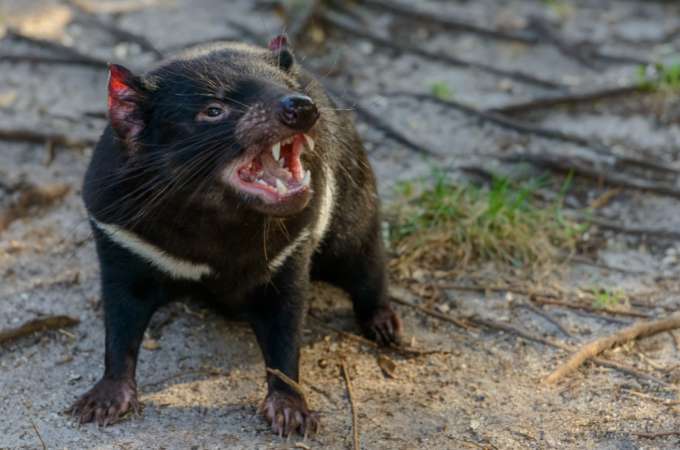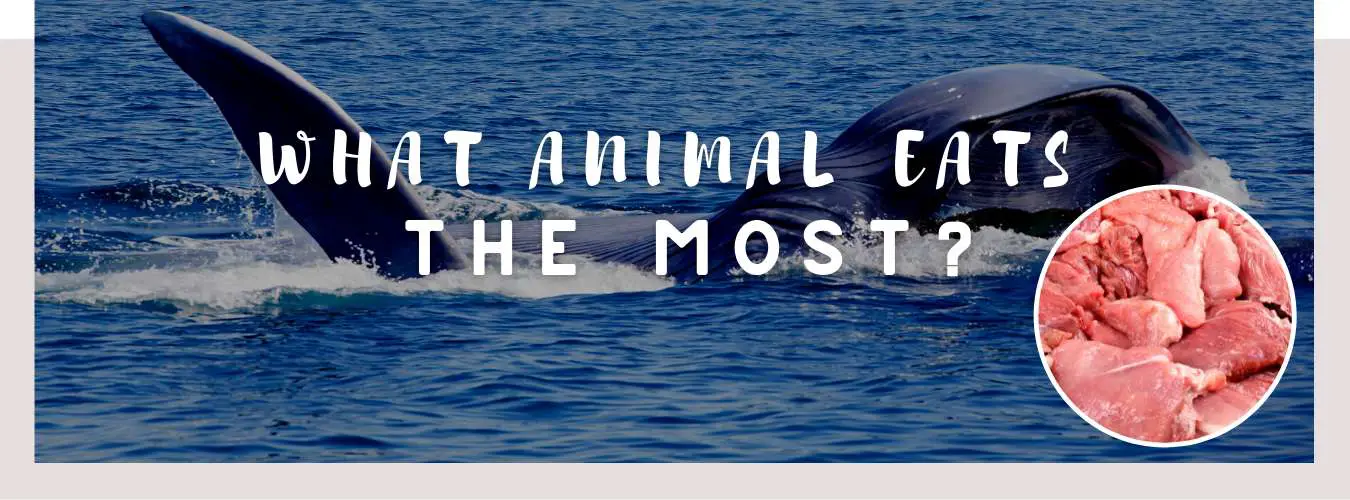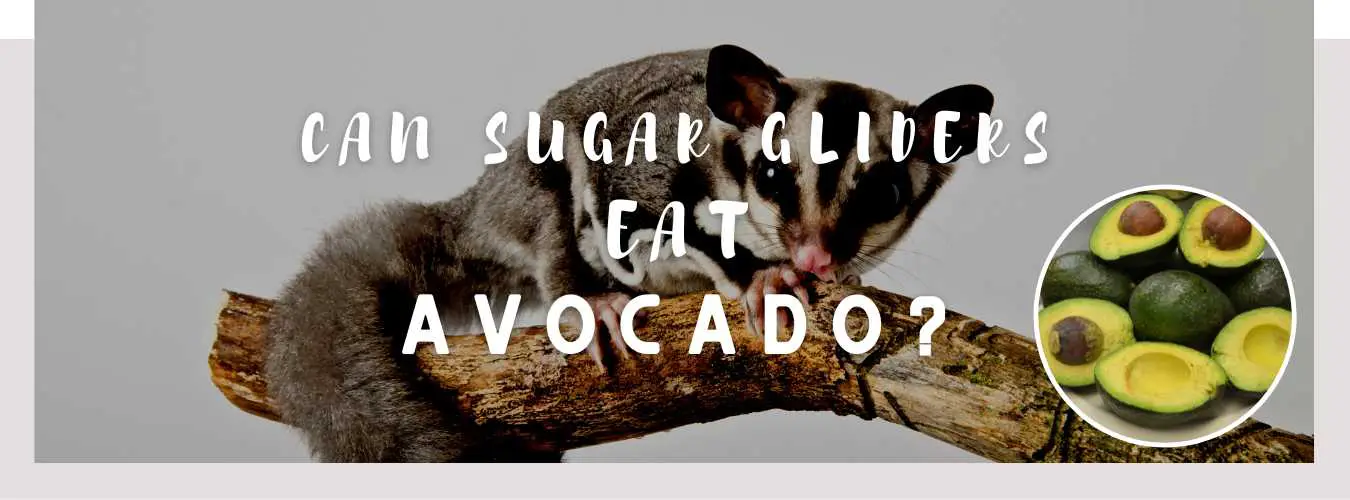
There are many hungry animal species in this world, which makes it hard to decide which is the hungriest animal in the world.
We can divide animals that eat the most into two categories: Animals consuming the most food in quantity and animals eating the most food relating to their body weight.
This article will answer the question: what animal eats the most?
If you want to find out which are the hungriest animals in the animal kingdom, please read on!
Animals That Eat The Most
Animals take many shapes and forms and come in various sizes, from microscopic to the 30m long blue whale. Whether you measure in terms of weight, height, or length, there is no denying some animals are enormous in comparison to others in their class. With this said, the amount of food consumed by these animals also differs.
Blue Whales
Blue whales are the largest mammal on earth, and these giant cetaceans need to consume a substantial amount of food to fulfill their energy requirement.
As the largest animal ever to have lived, you’d expect the blue whale to be a good eater. Thirty meters long and weighing some 170 tons, it eats up to 3,6 tons of krill (a type of plankton) a day. That’s equivalent to a daily intake of 1.5 million Calories.
You might also like: What Animal is at the Top of the Food Chain?
Elephants
When observing the behavior of African elephants, you’ll find that these creatures spend most of their time eating.
An African bush elephant is the largest land mammal, and it needs to consume sufficient food to maintain its body weight.
An African elephant can consume nearly three hundred pounds of food daily. However, the elephant only digests thirty to sixty percent of the food it consumes.
Hippos

Hippos prefer a plant-based diet and will avoid any animal-based food unless necessary.
This creature usually only scavenges for animal-based food if it’s unable to gather any foliage.
A hippo can eat nearly forty kilograms of food or grass each day, but this accounts for only 1.5 to 2 percent of its body weight.
Giraffes
Giraffes are large herbivorous creatures which means that they depend on the leaves of trees to help them maintain their body weight.
They also need to ensure that their body generates sufficient energy to support their movement.
A giraffe needs to consume nearly thirty-four kilograms of leaves every day.
An adult giraffe can weigh anywhere between 550 to 1200 kilograms.
Giraffes need to consume nearly thirty-four kilograms of leaves every day to maintain this massive weight. Therefore, you’ll see that a giraffe is constantly foraging for food and chewing on leaves.
Animals Eating The Most in Relation To Body Weight
Many animals consume more than their body weight daily. These animals can spend over 20 hours a day eating. Some eat every 15 minutes.
American Pygmy Shrew
Weighing in at as little as 2 grams and with a heart rate of more than 1 000 per minute, the American pygmy shrew is among the smallest mammals in North America.
The pygmy shrew needs to eat three times their body weight in food daily, which means it must find food every 15 to 30 minutes day or night.
The pygmy shrew eats 125% of its body weight daily and can only go about 2 hours without food.
You might also like: What Animals Eat Both Producers and Consumers?
The Hummingbird

Most hummingbird species range from 2 to 20 grams and measure 3 to 4 inches in length.
These birds have the fastest metabolism of any animal.
Hummingbirds eat half their body weight in sugar daily. Furthermore, they can store up to 17% of their body weight as fat.
Their speedy digestion causes them to eat nearly three times their body weight every day! Because hummingbirds primarily feed on nectar, they stop at over 100 flowers in a day.
California Condor
The California Condor is a species of vulture that lives along the entire Pacific coast of North America.
With a wingspan of nearly 10 feet, these scavengers can carry up to 5 lbs in flight but primarily feast on the carcasses of large mammals such as goats, sheep, cattle, horses, or coyotes.
These birds can consume up to 4 lbs of meat in one sitting!
Tasmanian Devil
Native to Tasmania, these little devils live in logs and caves in shrub forests and agricultural areas. Adults can weigh as much as 26 lbs and have a powerful jaw, fit for bone-crushing and snarling.

A Tasmanian Devil can swallow up to 40% of its body weight in under 30 minutes.
Argentine Horned Frog
The Argentine Horned frog is native to various grasslands in South America. These amphibians are known for overeating. They will often, successfully, take in prey that is larger than themselves.
These frogs hold the number one spot on a different top list: Biggest Mouth. Argentine Horned frogs have mouths that make up about 50% of their total body size.
Conclusion
A wild animal’s food consumption is determined as much by the food availability as by its appetite.
Sometimes, what might appear to be gross overconsumption becomes a valuable adaptation for survival.
Eating a quarter of one’s body weight might be considered overeating for most species. Still, the apparent excess must be seen in the light of the likelihood that the animal’s next big hunting and feeding opportunity may be days or a week away.
Gorging behaviors are seen in species like migratory birds preparing for a long ocean crossing and bears in autumn getting ready to hibernate.
I am a huge animal lover and have four dogs, a Labrador, Jack Russell, Pug, and Teacup Yorkie. I also have a cat and a Cockatiel. I have had pets since I was a toddler, and there was not a day when there wasn’t an animal in my house.









